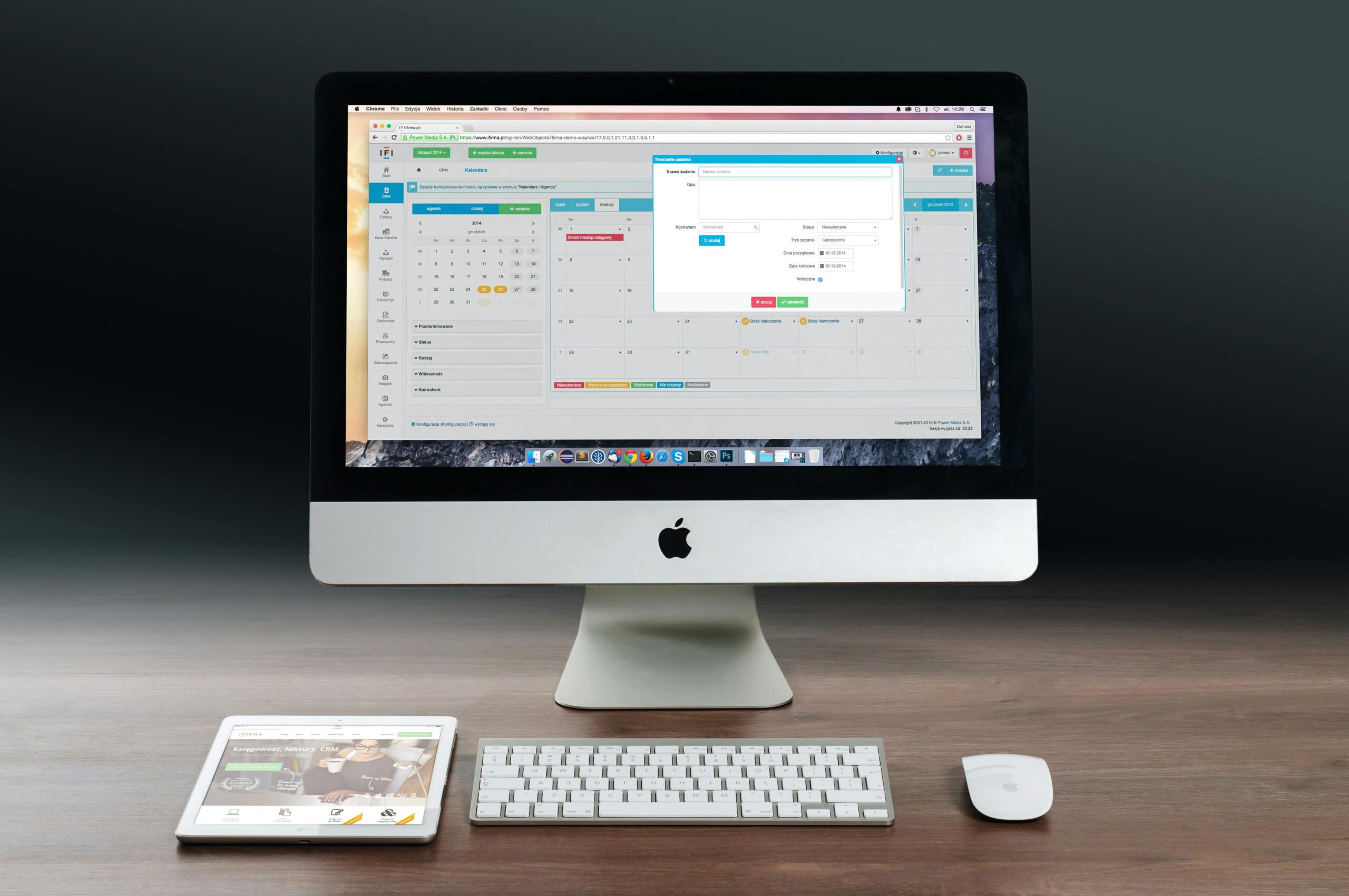

Business
💻 Remote Work Tax Tips Every U.S. Freelancer Needs to Know This Year
Must-know tax tips for U.S. freelancers: track income, file quarterly, claim deductions, and stay IRS-ready with smart tools and remote work rules.
Working from home is the new norm—but when tax season hits, many freelancers are caught off guard. Between 1099s, deductions, and state taxes, remote work can bring unexpected tax twists.
Whether you’re a content creator in Colorado, a designer in Dallas, or a digital nomad hopping between Airbnbs, here are the must-know tax tips for U.S. freelancers in 2025—and every year after.
📌 TL;DR: Freelancers should track everything, file quarterly, know what’s deductible, and get familiar with both federal and state requirements.
🧾 1. Know the Forms: 1099s, Schedule C, and the Self-Employment Tax
When you’re freelancing or working remotely as an independent contractor, you don’t get a W-2—you get a Form 1099-NEC from each client who paid you over $600.
You’ll report all that income on Schedule C (Profit or Loss from Business) and pay self-employment tax, which covers Social Security and Medicare.
🧠 Quick Breakdown:
- Self-Employment Tax Rate: 15.3%
- Minimum Filing Requirement: $400 or more in freelance income
⚠️ Pro Tip: Even if you don’t receive a 1099, you still have to report all income. Yes, even PayPal and Venmo payments.
📅 2. Don’t Skip Quarterly Estimated Taxes
Since no one is withholding taxes for you, you’re responsible for paying them quarterly to avoid IRS penalties.
🗓️ Estimated Tax Deadlines (2025):
- Q1: April 15
- Q2: June 16
- Q3: September 15
- Q4: January 15 (2026)
You can pay via the IRS Direct Pay portal.
💡 Freelancer Tip: Set aside 25–30% of your income for taxes in a separate savings account. Use an app like QuickBooks Self-Employed or Bonsai Tax to track income and estimate what you owe.
🪑 3. Home Office Deductions: Yes, You Probably Qualify
If you work from home, you can likely deduct part of your rent, utilities, and internet—as long as you use the space exclusively and regularly for business.
✅ Two Ways to Claim:
- Simplified: $5/sq ft, up to 300 sq ft
- Actual Expenses: Pro-rate based on business use
🛋️ Example: If your office is 10% of your home, you can deduct 10% of rent, electricity, etc.
🚗 4. Mileage and Travel: Track Every Business Mile
Drive to client meetings? Attend conferences? Those miles are deductible. For 2025, the standard mileage rate is TBD (check IRS.gov for the updated rate), but usually it’s around 65.5 cents per mile.
You can deduct:
- Business trips
- Coworking travel
- Travel to pick up business supplies
Use apps like MileIQ or Everlance to auto-track your drives.
📚 5. Other Deductions You Might Be Missing
Freelancers leave thousands on the table by missing legit write-offs. Here are a few:
| Deduction | What It Covers |
|---|---|
| Software & Subscriptions | Adobe, Canva, Zoom, Dropbox |
| Equipment | Laptop, webcam, external monitor |
| Education | Online courses, webinars, certifications |
| Health Insurance | Self-employed can deduct premiums |
| Marketing | Website, social media ads, email tools |
| Professional Services | Accountants, legal help |
🧾 Bonus Tip: Keep digital receipts organized in folders by month or use expense management apps.
🌐 6. Working Across State Lines? Beware of the “Nexus”
If you’re a remote worker or digital nomad who lives in one state and works with clients in another, things get tricky.
Key things to know:
- Some states want you to pay taxes if you live there (even temporarily)
- Others might require business registration if you earn significant income from clients in that state
- No state income tax? Check out Florida, Texas, Tennessee, and Nevada
⚠️ Hot Tip: If you moved during the year, file part-year resident returns in each state where you lived.
👨💻 7. Use a Tax Pro (or Good Software)
You don’t have to do it all yourself. Invest in a CPA who specializes in freelance and remote income, or use software like:
- TurboTax Self-Employed
- H&R Block Premium
- FreeTaxUSA
- Keeper Tax (AI + human support)
🔄 Bonus: What’s New in 2025?
Here are a few 2025 updates freelancers should know:
- 1099-K Threshold: Now $5,000 (was $600 in 2024 but raised again)
- Standard Deduction: Increased slightly (check IRS.gov)
- Remote Work Audits: The IRS is increasing scrutiny of home office deductions—keep proof!
✅ Final Checklist for Freelancers
✅ Track income + expenses weekly
✅ Pay quarterly taxes
✅ Claim all legit deductions
✅ Use mileage + receipt tracking apps
✅ Know your state rules
✅ Use smart software or hire a pro

Business
10 AI Tools That Feel Like Having a Super-Smart Assistant AI-Powered Productivity: How to Use AI Tools to Save Time and Work Smarter
10 AI Tools That Save Time (Real People Love Them) – Notion, ChatGPT-5, GrammarlyGO & more. Automate tasks, write faster & focus on what matters.

Let’s be honest—between work, side hustles, and personal life, most of us could use an extra pair of hands. That’s where AI tools come in. But not the clunky, robotic kind—these feel like having a sharp, helpful teammate who actually gets things done.
After talking to freelancers, small business owners, and even my overworked neighbor (shoutout to Dave, who finally has time for his kids’ soccer games), here are 10 AI tools real people are using to claw back hours in their week.
1. Notion AI – Your Brain, But Organized
“I used to waste hours digging through notes—now Notion summarizes them for me.” – Sarah, Content Strategist
Imagine dumping all your chaotic thoughts, meeting notes, and to-dos into one place… and having it magically organize itself. Notion AI:
- Turns messy brainstorming into clean outlines
- Reminds you about deadlines (before you panic)
- Even drafts emails so you sound less frazzled
Who it’s for: Anyone who’s ever cried, “Where did I write that down?!”
2. ChatGPT-5 – Like Google, But Actually Helpful
“It’s my go-to for explaining tech to my grandma—and debugging code.” – Marcus, Software Dev
The latest ChatGPT doesn’t just spit out generic answers. It:
- Digs up recent stats (no “as of 2021” nonsense)
- Helps rewrite awkward texts (“Make this sound less passive-aggressive”)
- Teaches you stuff fast—like a patient tutor
Who it’s for: People who hate digging through 10 tabs to find one useful answer.
3. GrammarlyGO – Your Polite Ghostwriter
“I swear it knows my ‘angry client email’ tone better than I do.” – Priya, Freelancer
Beyond fixing commas, GrammarlyGO:
- Replaces corporate jargon with human words
- Spits out LinkedIn posts when you’re out of ideas
- Makes your rough drafts sound like you tried
Who it’s for: Anyone who’s ever stared at a blank doc for 20 minutes.
4. Otter.ai – The Meeting Whisperer
“Now I can zone out in Zoom calls guilt-free.” – Jake, Marketing Manager
Otter doesn’t just transcribe—it:
- Highlights the 3 key points from a 60-minute ramble
- Labels who said what (so you know who to blame)
- Searches past meetings like a podcast playlist
Who it’s for: People who attend meetings that should’ve been emails.
5. Jasper – The Blogging Sidekick
“It’s like my caffeine-powered co-writer… minus the jitters.” – Lisa, Small Biz Owner
Jasper helps when:
- Your brain says “SEO” but your soul says “nap”
- You need 10 product descriptions by noon
- Writer’s block hits (again)
Who it’s for: Business owners who’d rather do the work than write about it.
6. Motion – The Time-Blocking Fairy Godmother
“It reschedules my disasters so I look competent.” – Carlos, Consultant
Motion:
- Blocks focus time before your calendar explodes
- Moves tasks around like Tetris (but less stressful)
- Says “no” to meetings so you don’t have to
Who it’s for: Overbooked people who double-book themselves weekly.
7. Fireflies.ai – Your Meeting Wingman
“It caught my boss promising a raise. Twice.” – Taylor, Sales Rep
Fireflies:
- Takes notes so you can actually listen
- Finds that “we’ll circle back” from 3 months ago
- Integrates with tools (so you don’t have to)
Who it’s for: Teams where half the meetings are about scheduling more meetings.
8. Copy.ai – The Idea Generator
“I used it for ad headlines—now my husband steals it for Tinder bios.” – Naomi, Ad Strategist
Copy.ai is clutch when:
- Your creativity peaced out after lunch
- You need 20 taglines by EOD
- Your first draft sounds like a robot wrote it
Who it’s for: Marketers tired of brainstorming into the void.
9. Tome – The Slide Deck Savior
“I made a client presentation in 10 minutes. They called it ‘polished.’” – Ryan, Startup Founder
Tome:
- Turns your bullet points into actual slides
- Adds visuals so you don’t use Clip Art (it’s 2025, people)
- Embeds live data (no more screenshotting spreadsheets)
Who it’s for: Anyone who’s ever cried over PowerPoint.
10. Rewind AI – Your Personal Google
“It found a lost contract from 6 months ago. My lawyer was impressed.” – Denise, Realtor
Rewind:
- Records everything you see/hear (opt-in, obviously)
- Finds that “I’ll remember this” thing you forgot
- Works across apps (no more 20-tab scavenger hunts)
Who it’s for: People who misplace digital things as much as car keys.
The Bottom Line
These tools aren’t about replacing humans—they’re about giving you back the time you’d waste on busywork. So you can finally:
Take that lunch break
Start the side project
Or just watch Netflix without guilt
Business
Mastering Productivity: The Best Work-from-Home Tools to Boost Efficiency

Introduction
Working from home has become the new normal for millions of professionals across the USA. But maintaining productivity outside a traditional office can be challenging. Whether you’re a remote worker, freelancer, or entrepreneur, having the right home office setup and using the best productivity tools can drastically improve your workflow. In this guide, we explore top-rated tools and remote work hacks to help you stay focused, organized, and efficient.
Why Productivity Tools Matter in a Home Office Setup
Distractions at home can kill your focus. From noisy neighbors to endless household chores, it’s easy to get sidetracked. That’s where productivity tools come in—helping you structure your day, track your progress, and optimize performance.
Key Benefits:
- Better time management
- Improved collaboration with remote teams
- Enhanced focus and motivation
- Reduced stress and burnout
Essential Work-from-Home Tools to Supercharge Your Productivity
1. Communication & Collaboration Tools
- Slack: Ideal for real-time team messaging.
- Zoom: The gold standard for video conferencing.
- Microsoft Teams: All-in-one collaboration platform. 👉 Explore communication tools here
2. Time Management & Focus Apps
- Toggl: Track your time and analyze how you spend it.
- RescueTime: Monitor habits and block distractions.
- Forest: A fun way to stay focused by growing a virtual tree. 👉 Try top focus tools
3. Project Management Software
- Trello: Visual task boards for managing projects.
- Asana: Powerful features for team workflows.
- Notion: Combines notes, databases, and task tracking. 👉 Find your ideal project tool
4. Cloud Storage & File Sharing
- Google Drive: Sync files across all devices.
- Dropbox: Secure cloud storage for documents and media. 👉 Get started with cloud storage
5. Home Office Essentials
- Ergonomic Chair: Prevents back pain during long hours.
- Standing Desk Converter: Boosts energy and posture.
- Noise-Cancelling Headphones: Cuts out distractions. 👉 Upgrade your home office setup
6. Automation & AI Tools
- Zapier: Connects and automates your favorite apps.
- ChatGPT: Write emails, summarize meetings, and brainstorm ideas. 👉 Discover smart automation tools
Remote Work Hacks for Peak Productivity
- Establish a Routine: Start and end your workday at the same time.
- Designate a Workspace: Create a clutter-free and quiet work zone.
- Use the Pomodoro Technique: Work in 25-minute sprints with short breaks.
- Batch Similar Tasks: Reduce task-switching fatigue.
- Dress for Success: Dressing up tricks your brain into work mode.
Productivity while working from home isn’t just about willpower—it’s about having the right tools and strategies. By optimizing your home office setup, using the best productivity tools, and incorporating smart remote work hacks, you can stay ahead of your tasks and perform at your best. Start exploring the tools that work best for you and create a workflow that powers your success.
Business
Building Generational Wealth: Financial Lessons Every Parent Should Teach Their Kids

Introduction
In today’s fast-paced world, understanding money is more important than ever. Yet, financial education is often left out of school curriculums, leaving it up to parents to bridge the gap. If you want to set your kids up for lifelong success, start now by building financial literacy for families at home. From smart saving habits to teaching kids about investing, here are essential money lessons every child should learn to help them—and future generations—thrive.
1. Start Early with Simple Money Lessons for Kids
The foundation of generational wealth starts with early education. Young children can grasp basic concepts like earning, saving, and spending through simple conversations and fun activities.
Easy ways to introduce money to kids:
- Use a piggy bank to teach the value of saving.
- Give age-appropriate allowances tied to chores.
- Play educational board games like Monopoly Junior or The Game of Life.
👉 Tip: Make it visual. Show kids how money “grows” in a jar—or in a bank account.
2. Teach the Power of Budgeting and Saving
By the time kids hit their teen years, they should be able to manage their own small budgets. Teaching budgeting is one of the most valuable money lessons for kids because it promotes responsibility and future planning.
Money-smart habits to teach:
- Save at least 20% of any money received (gifts, allowance, etc.).
- Use the “Needs vs. Wants” method when shopping.
- Introduce simple budgeting tools or apps like Greenlight or GoHenry designed for families.
3. Introduce Banking and Interest Early
Helping your child open a savings account introduces them to real-world finance. Explain how banks work, what interest is, and how compound interest helps money grow over time.
Why it matters:
- It reinforces the idea of delayed gratification.
- It provides a hands-on way to track progress and goal setting.
- It builds financial confidence at a young age.
👉 Consider opening a custodial account or a teen-friendly savings account with features they can manage with guidance.
4. Teaching Kids About Investing
Investing isn’t just for adults—and it’s never too early to start teaching kids about investing. Helping children understand the basics of stocks, compound growth, and risk vs. reward sets them up for long-term financial success.
Ways to teach investing:
- Use kid-friendly investing apps like Stockpile or Fidelity Youth Account.
- Buy them a share of a company they recognize (Disney, Apple, Nike).
- Explain how mutual funds and ETFs work using easy analogies.
👉 Pro tip: Let them track their investments and watch how they grow over time. It builds patience and financial literacy.
5. Model Good Financial Behavior
Children learn more from what you do than what you say. If you want your kids to be financially responsible, model that behavior yourself.
Key habits to demonstrate:
- Discuss family budgets openly.
- Talk about long-term saving goals (college, a family trip, retirement).
- Involve them in small financial decisions like grocery shopping or comparing prices.
6. Normalize Conversations About Money
Breaking the taboo around talking about money is a crucial part of financial literacy for families. When kids see money discussed positively and regularly, they become more comfortable managing it themselves.
What to talk about:
- How credit cards work
- What taxes are and why we pay them
- The difference between good debt (student loans, mortgages) and bad debt (high-interest credit cards)
7. Set Them Up for Future Success
To truly build generational wealth, create financial systems your children can inherit and grow.
Consider setting up:
- A custodial Roth IRA (for teens with earned income)
- A 529 college savings plan
- Life insurance or a trust fund to protect future assets
Also, encourage entrepreneurship. Whether it’s a lemonade stand or an Etsy shop, helping kids start a small business teaches real-world money skills and boosts their confidence.
Final Thoughts
Raising financially literate kids is one of the greatest gifts you can give. By sharing these money lessons for kids and encouraging financial literacy for families, you’re not just teaching children how to earn and save—you’re helping them build a strong financial legacy. Teaching kids about investing and wealth-building empowers them to make smart decisions that benefit generations to come.
Recommended Tools & Books for Kids’ Financial Literacy
📘 “The Everything Kids’ Money Book”
📱 Greenlight Debit Card for Kids
💰 Fidelity Youth Account
-

 Culture1 year ago
Culture1 year ago🎉 10 Cultural Festivals in the U.S. You Should Experience at Least Once
-

 Culture1 year ago
Culture1 year agoMeet Superman’s grandfather in new trailer for Krypton
-

 Culture1 year ago
Culture1 year agoHow American Subcultures Are Shaping Gen Z Identity in 2025
-

 Culture1 year ago
Culture1 year agoHow Black American Culture Shapes Global Trends in 2025
-

 Culture1 year ago
Culture1 year agoA New Era Begins: Karate Kid: Legends Rekindles the Spirit of a Timeless Franchise
-

 Culture1 year ago
Culture1 year agoGeorge Lopez’s New Stand-Up Special Coming to Prime Video – Don’t Miss!
-

 Health1 year ago
Health1 year ago2025 Morning Routines That Are Changing American Lives (One Cup of Coffee at a Time)
-

 Home and Decor1 year ago
Home and Decor1 year ago10 Budget-Friendly Home Décor Hacks to Transform Your Space


